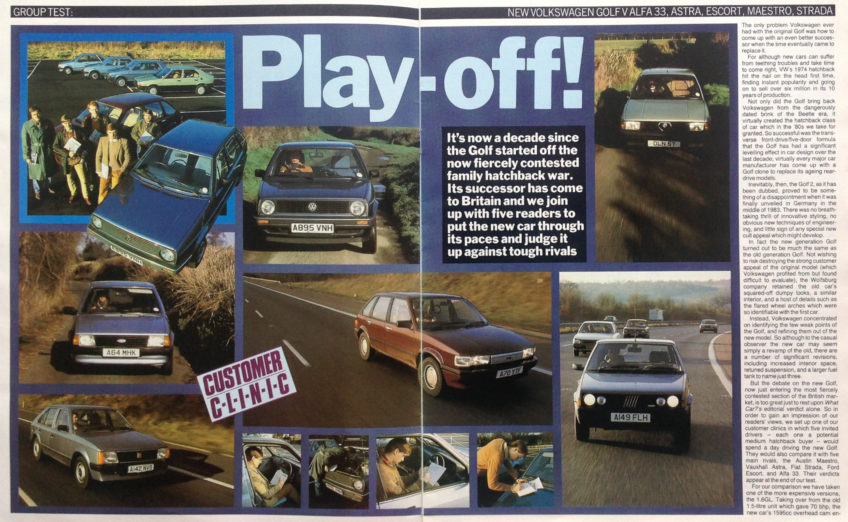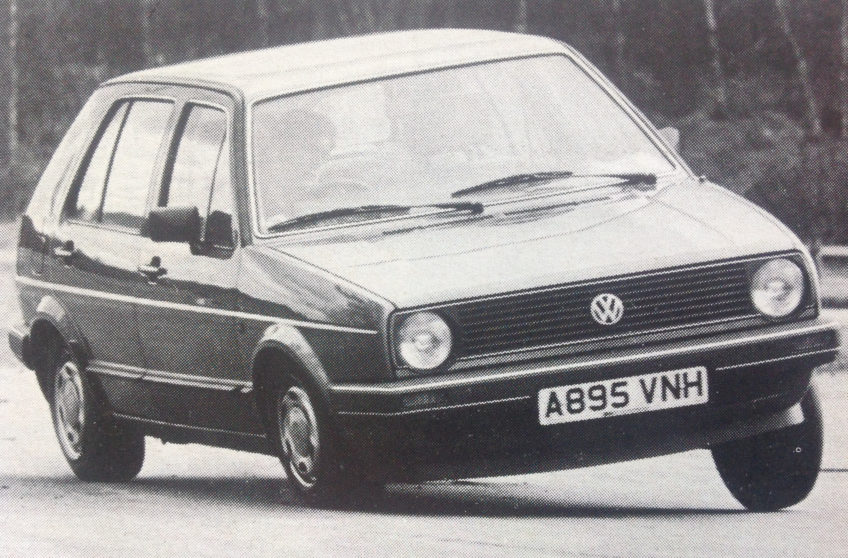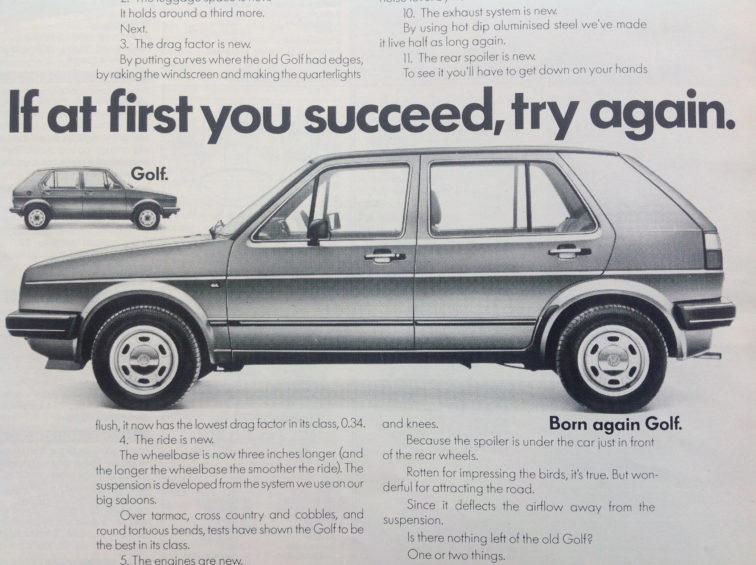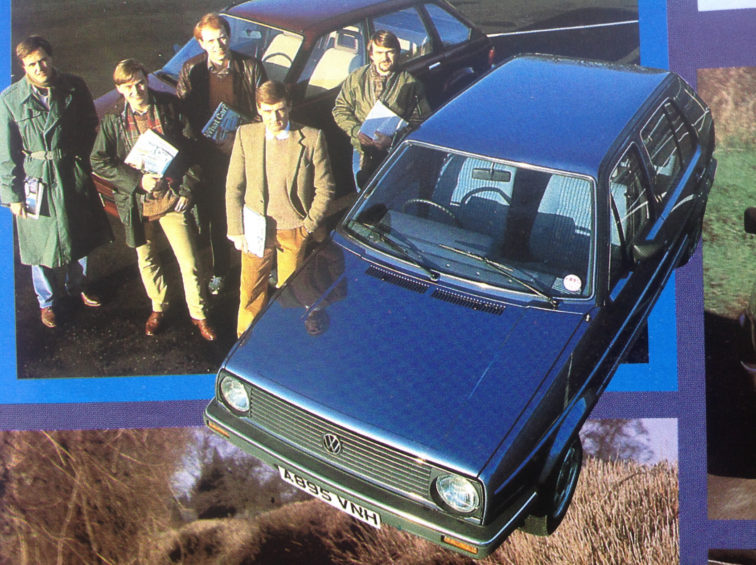We’ve all read how the Mk1 Golf GTi managed to thrash its rivals in the late ‘70s. But what about the more run-of-the-mill Mk2 in humble 1.6GL guise? How did that fair when it appeared in 1984? We unearthed a What Car? ‘customer clinic’ that reveals some rather interesting findings…
The only problem VW ever had with the Mk1 Golf was how to come up with an even better replacement. Suffice to say, there’s was an albeit brief sigh of disappointment when the Mk2 broke cover in the middle of 1983. While it was bigger inside, more comfortable and generally stronger – it wasn’t as sharp looking as its predecessor. Moreover, it didn’t push any boundaries when it came to innovative new features. However, as the years have passed and the second generation Golf’s many talents have become more recognised, it’s established a truly avid following all of its own.
It’s funny to think that in such a highly fought contested market sector, the Mk2 Golf’s main competitors included the Alfa Romeo 33, Vauxhall Astra, Ford Escort, Austin Maestro and Fiat Strada. Now, how many of those do you see still in regular use? And which of those has such a strong club, parts and enthusiast following? Back in the early ‘80s, though, things weren’t as clear-cut and the panel of randomly selected reviewers didn’t have the same benefit of hindsight. So here’s how they judged the Golf against its main rivals back in 1984…

Performance
When it came to dishing out the beans, the Alfa 1.5 proved the most fun to drive according to the five reader panel judges. The worst car was the Maestro, which proved the slowest on paper. However, the Golf ranked highest overall thanks to, as they put it: “Turbine-smooth power delivery and excellent transmission.” They also liked the Golf’s excellent torque. Not everyone liked the German newcomer, though. Graphic artist Alan Eldridge from Surrey reckoned the Golf was spoilt by wind noise which would make long motorway journeys ‘tedious’. There’s no pleasing some people.
Handling
Here, the Golf impressed again at the time of its launch. Despite mentioning that there seemed to be more body roll than in the Mk1, the reviewers liked the steering ‘feel’ and straight line stability. The Astra and Escort came off worse on their test drive – their firmness being at the extreme detriment of passenger comfort. “Really poor road surfaces leave the Escort driver shell shocked by the bumpiness,” remarked the What Car? editorial.

Accommodation
The Golf was only bettered by the Maestro when it came to interior space. They liked the Golf’s excellent driving position and driver’s eye of the road ahead but were less impressed by the chunky rear pillars which obscured rear visibility. They also liked the extra legroom over the first generation Golf in the back. The two Italian cars (Fiat and Alfa) got a scathing review when they climbed inside with criticism mainly focussed on their uncomfortable seats and “traces of Italian awkwardness” when it came to their driving position.
Living with the cars
You guessed it, the Golf topped the ratings in this respect, with reviewers liking the fact that noise levels from the engine was “almost non-existent.” They also talked about the effective heating and the interior’s smart and practical appearance. The fact that the Maestro tested didn’t have the innovative ‘talking’ dashboard didn’t do the Austin any favours, which lead to the rather hurtful: “The ordinary facia seems very much the poor cousin of the electronic one, with ugly dials and unattractive switches which retain just a little too much of the plastic nastiness of BL cars of old.” It just goes to show that while the Golf GL probably looked a little bland, it was functional and it’s no-nonsense approach didn’t ruffle as many feathers as the other cars.

Costs
Getting to the nitty gritty, while the Fiat at £5272 was the bargain of the group the Golf’s “rather steep” £6696 purchase price was the most expensive. However, having returned an impressive 36.8mpg overall, the testers concluded that the Golf should still prove “very miserly” to run. The poor old Alfa faired the worst when it came to costs as it only managed 30mpg on average. The report commented on the fact that the VW, Austin and Fiat came with a six-year anti-corrosion warranty, while the Alfa’s was five and the Ford and Vauxhall came with no guarantees whatsoever. That speaks volumes about the last two, doesn’t it – and explains why there’s so few Astras and Escorts from this era still trundling around…
Verdict
Okay, there’s no surprises when it came to which car came out top overall. It was the Golf. There’s still a tinge of disappointment apparent in the fact that it broke so little new ground on the old model, and the that “it doesn’t exactly ooze character.” However, despite its high asking price, What Car? pronounced it as the “clear winner” by virtue of its excellent performance, good handling and ride, a spacious interior and an “all round competence of design.” The Escort was second, the Maestro third, Astra fourth and Strada and 133 fifth and sixth respectively.

What didn’t they like?
When the five guest drivers’ votes were added up, the Golf came first. But only two ranked it as their best car, and one of those was a Mk1 GTI owner, so that result is probably a bit biased in any case. So what were the main gripes? Computer programmer Steve Roberts didn’t like the Golf’s lack of positive steering, or the over firm seat backrest and placed the Golf second from bottom. Capri driver Philip Duckworth thought the Golf looked ‘strange’, commenting that the rear end is ‘odd’ and reckoning that the high boot lip would make it difficult for loading and the thick rear pillars would hinder visibility. That said, he placed it second behind the Alfa.
So what can we make of all this today? Firstly, it seemed while the ‘new’ Mk2 didn’t thrill as such, it successfully built on the strengths of its predecessor and ironed out some of its shortcomings. It was dear, yes, but you got what you paid for in terms of refinement compared to its rivals. Even back then it was recognised as being cheap to run.
Looking back at the cars it was up against, and how those cars have wilted by comparison, provides the biggest insight into the Mk2 Golf’s real talent. And that’s its longevity and everlasting appeal – and the fact that it makes as much sense today as it did 33 years ago…
Ian
The opinions expressed here are the personal opinions of the author and do not necessarily represent the views and opinions of VW Heritage


The Jetta was more popular in the States probably due to the huge boot in the Mk2.. I have an ’85 2 door. Best car I’ve ever had reliability wise. On a flatbed once in it’s life for a busted cv joint.
I also have an ’07 MINi Cooper S currently in the shop having its engine replaced after only 105,000 miles! That engine costs almost as much as I paid for the Jetta in 1985!
Jetta has over 425,000 on it. Uses no oil.